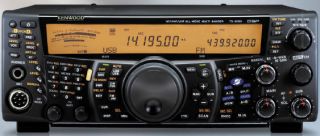Television
Yes, an amateur radio licence (other than Foundation level) is also your amateur television transmitting licence, if you're so inclined. The licence condition of experimentation rather than broadcasting still applies though!
The signals transmitted are just like those from the conventional ABC, SBS and commercial TV broadcasters, though at somewhat lower power. Transmissions are usually in colour, and have the usual sound accompaniment. Some cities have amateur television repeater stations, which retransmit signals from amateur television operators. In some cities these transmit on UHF Channel 35, so can be received on a standard UHF TV set.
In Sydney the Sydney Amateur Television Group runs an ATV repeater. The Gladesville Amateur Radio Club has a strong record of achievement in Amateur Television.
In Melbourne, the Moorabbin and District Radio club runs the VK3RTV amateur television repeater. Though this operates in the 420 - 450 MHz band, it can still be watched on many standard UHF TV sets, provided that they tune down to about channel 16 (extreme bottom end of band, below SBS Ch 28). Because ATV is weaker than signals from the usual broadcasters, a correctly positioned outdoor antenna and (possibly) a masthead preamplifier are required to achieve best reception in most areas.
In Brisbane the Ipswitch Metro Radio club runs an ATV repeater.
TV transmissions using FM instead of the more conventional AM are increasingly being experimented with on microwave bands from 1.3 GHz up.
Next: Packet radio

